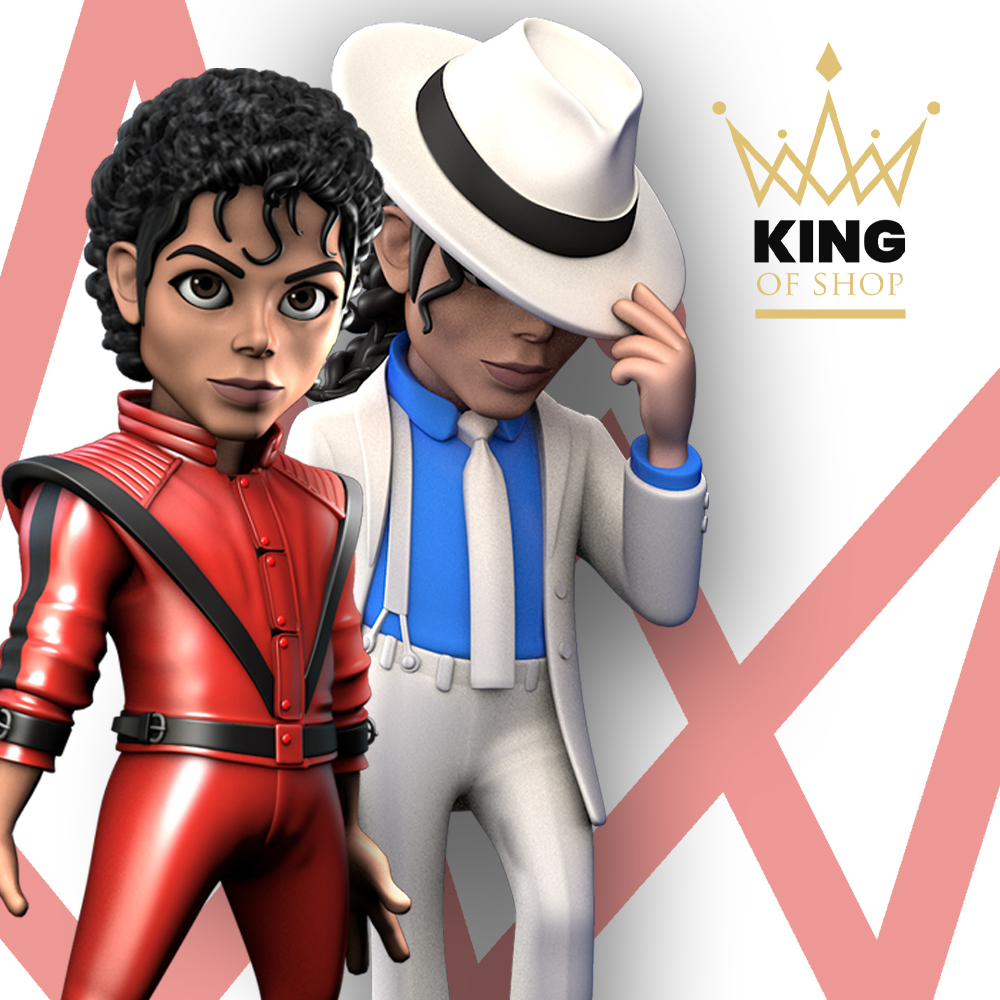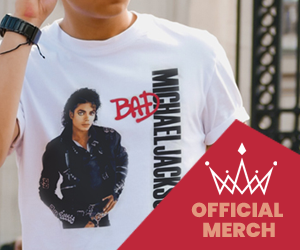‘Gone Too Soon’: The Many Lives of Michael Jackson’s Elegy
The ballad was written to mourn fallen icons, recorded by Jackson to mourn a fallen friend, and revived three years ago to mourn the fallen King of Pop.

When Michael Jackson died three years ago today, among the many songs in his catalog injected with new significance was the 1991 ballad, “Gone Too Soon.” Performed by Usher at Jackson’s memorial service, the track had fascinated Jackson for years before he recorded it—and was finally put to tape following tragic circumstances. Here’s the story behind the song, which has been revived time and again for times of public mourning.
IT WAS PAST MIDNIGHT ON A SUNDAY when the phone rang at the Kohan home. “Sorry, did I wake you up?” a voice whispered on the other line. “Is Buzzie there?”
It was Michael Jackson, who, at the moment, was riding one of the biggest waves of success popular music had ever seen. That month (February, 1983) Jackson was featured on the cover of Rolling Stone; “Beat It” joined “Billie Jean” at the top of the charts; his videos played in a loop on MTV; and Thriller was flying off shelves like loaves of bread.
“Buzzie” was Buz Kohan, renowned television producer and writer (best known for his work on award shows and variety shows, including the Motown 25 special). Jackson first met him when the singer was just 12 years old. Buz lived nearby in Encino on beautiful Beaumont Street. He was a well-known veteran in the entertainment industry, and the two became good friends. Jackson would ask Buz endless questions about legendary figures like Bing Crosby, Gene Kelly, Sammy Davis and Fred Astaire—the “greats,” as he called them. They later worked closely in Las Vegas for the Jackson family’s variety show.
“We oughta write some songs together,” a teenage Jackson suggested one day. They began co-writing soon after and their collaborations, which included songs like “Scared of the Moon” and “You Were There,” continued over the next two decades.
Dionne Warwick had sang “Gone Too Soon” during a TV tribute to performers who died early. Watching it, Jackson wept.
Buz’s wife, Rhea, had grown accustomed to Jackson’s late night calls. “Just a second,” she said, passing the phone to her husband. Jackson was calling that night about a particular song. Earlier that evening he had watched Dionne Warwick (a good friend) perform a tribute on the TV special, “Here’s Television Entertainment.” It was dedicated to many performers whose lives had been cut short too soon—John Lennon, Jimi Hendrix, Janis Joplin, and Sam Cooke, among others—but its poignancy was especially felt due to the death of Karen Carpenter just days earlier at the age of 32.
“Certain singers carry with them the energy of their time,” Warwick had said. “They become symbols or signposts. They’re reminders of our frailties and need to communicate… [Tonight] we are left with unanswered questions that are asked when any great talent is consumed before its time: Why? What if? And what might have been?”
Warwick proceeded to sing a moving rendition of a song co-written by Buz Kohan and Larry Grossman. It was called “Gone Too Soon.”
Jackson said he wept as he watched. He had grown up with the music of the Carpenters. Their songs were part of his DNA. But that song—there was something deeper about it that he connected to.
That night Jackson told Buz he felt he had to record it some day. “It’s yours when you want it,” Buz said. In the ensuing months, however, other projects took precedent, including the music videos for “Beat It” and “Thriller.” Every now and then, “Gone Too Soon” re-appeared as a tribute number at charity events or ceremonies. In addition to Dionne Warwick’s performance, it was later sung by Patti Labelle and Donna Summer. But it was never recorded in a studio.
Years later, in 1990, Buz and Jackson were talking on the phone when Jackson brought up a young boy he had befriended named Ryan White. “He’s not gonna live forever,” Jackson said. “I wanna do something special for him.” Ryan had become the national face of AIDS at a time when the disease was still severely misunderstood, stigmatized, and feared.
An ordinary kid from Kokomo, Indiana, Ryan contracted the AIDS virus through a tainted blood transfusion (Ryan was a hemophiliac). He was then shunned, taunted, bullied, and threatened with violence by his classmates and community. Fellow students called him a “queer” and treated him like a leper. Members of his local church refused to shake his hand. Neighbors on his paper route cancelled their subscriptions. Eventually, he was forced out of his middle school.
When he heard the story, Jackson reached out to Ryan to offer friendship and support. They quickly became close. Both were so accustomed to feeling different, they said, it was a relief just to feel “normal” for a few hours in each other’s company. Over the ensuing months, they talked on the phone often. Ryan was a remarkably thoughtful, eloquent, and mature teenager. He understood he was hated and feared by many; he understood he had been thrust into a very public role; and he understood he would die soon.
Jackson remembered one night listening to Ryan White at his dining room table telling his mom how to bury him. “He said, ‘Mom, when I die, don’t put me in a suit and tie,” Jackson recalled in an interview with Shmuley Boteach. “I don’t want to be in a suit and tie. Put me in OshKosh jeans and a T-shirt.’ I said, ‘I have to use the bathroom,’ and I ran to the bathroom and cried my eyes out, hearing this little boy tell his mother how to bury him.”
Jackson knew he couldn’t change Ryan’s fate, but he hoped to give him some escapism and joy before his time was up. White and his family made several trips to Neverland Ranch, where they rode four wheelers, ate pizza, and watched a private screening of Indiana Jones: The Last Crusade. “Those trips to California kept me going,” Ryan said.
Jackson later bought Ryan a red Mustang convertible, his dream car, for his birthday. Just months later, however, on April 8, 1990, Ryan died.
The next day, Jackson arrived in Indiana. He sat in Ryan’s empty room for hours, looking at his souvenirs, clothes, and pictures. “I don’t understand when a child dies,” Jackson later said. “I really don’t.” Ryan’s mother, Jeane, offered to let Jackson have whatever he wanted as a keepsake, but he told her just to keep everything in his room as it was.
In the front yard was the red Mustang Jackson had given Ryan, covered with flowers from well-wishers. Ryan’s sister, Andrea, got in the car with Jackson. When he turned it on, “Man in the Mirror” began to play. It was the last song Ryan had listened to.
When Buz Kohan heard of Ryan’s death, he had archivist Paul Seurrat (who compiled and catalogued videos for Jackson) put together footage of Jackson and Ryan together along with Dionne Warwick’s rendition of “Gone Too Soon.”
Jackson called Buz soon after. “It’s perfect,” he said. “I love it.” Jackson had promised Ryan he could be in his next music video, but they ran out of time. This was it, Jackson thought. He would create a video and song dedicated to Ryan and his cause. I want the world to know who you are, he pledged.
“There’s one thing though,” Jackson told Buz. “I don’t do covers. Has anyone recorded it?”
“Nope,” Buzz said. “It’s been sung, but not recorded. My people have a word for this. Bashert. It was meant to be. It’s been waiting for you.”
Months later, Buzz was there in the studio at Ocean Way when Jackson recorded the song. As usual, Jackson sang in the dark to fully immerse himself. Sitting by engineer Bruce Swedien at the control desk, Buz got goosebumps as he listened. The lyrics were about the beauty, transience, and fragility of life. The words could easily devolve into cliche and sentimentality in the hands of an ordinary performer, but Jackson was no ordinary performer. “He put his soul into it,” recalls Buz. “There was no exaggeration or affect. It was real emotion.”
“Gone Too Soon” was track No. 13 of 14 on the Dangerous album. It was released as a single on World AIDS Day, December 1, 1993. Jackson also performed the song at President Bill Clinton’s inaugural gala to further educate the world about Ryan White and garner political support and funding for AIDS research. Before singing, Jackson spoke to the audience directly:
I would like to take a moment from this very public ceremony to speak of something very personal. It concerns a dear friend of mine who is no longer with us. His name is Ryan White. He was a hemophiliac who was diagnosed with the AIDS virus when he was eleven. He died shortly after turning 18, the very time most young people are beginning to explore life’s wonderful possibilities. My friend Ryan was a very bright, very brave, and very normal young man who never wanted to be a symbol or a spokesperson for a deadly disease. Over the years, I’ve shared many silly, happy, and painful moments with Ryan and I was with him at the end of his brief but eventful journey. Ryan is gone and just as anyone who has lost a loved one to AIDS, I miss him deeply and constantly. He is gone, but I want his life to have meaning beyond his passing.
“Gone Too Soon” was given new relevance on June 25, 2009 when Jackson died unexpectedly in his home in Los Angeles. He was 50 years old. Three years later, the words he once animated with his inimitable voice and spirit, still resonate. Chances are, it’ll be sung again.



